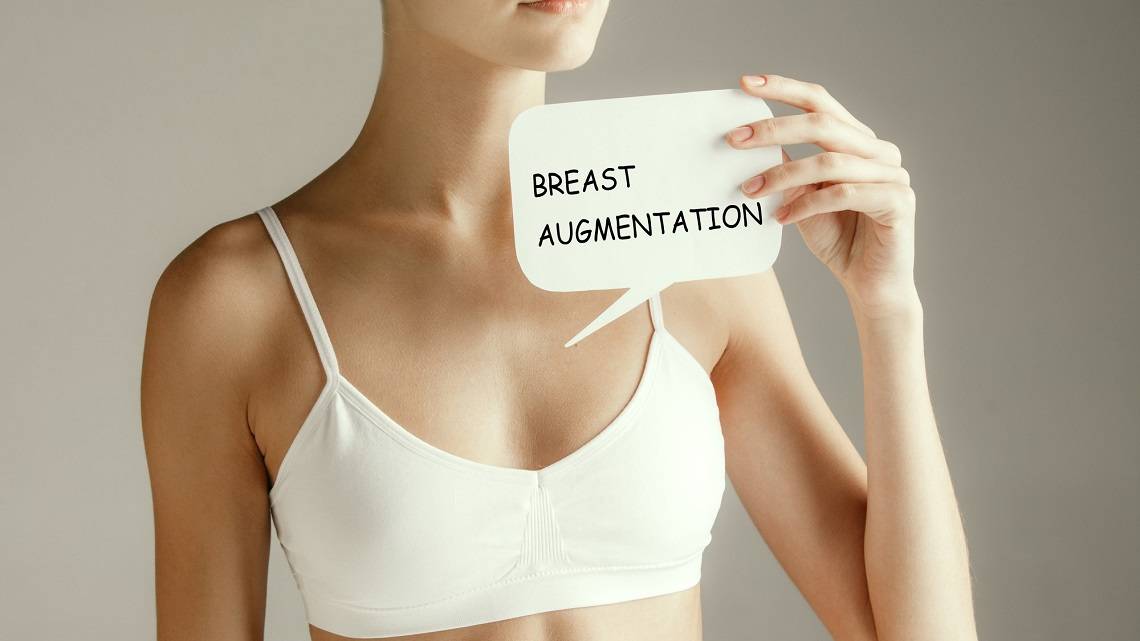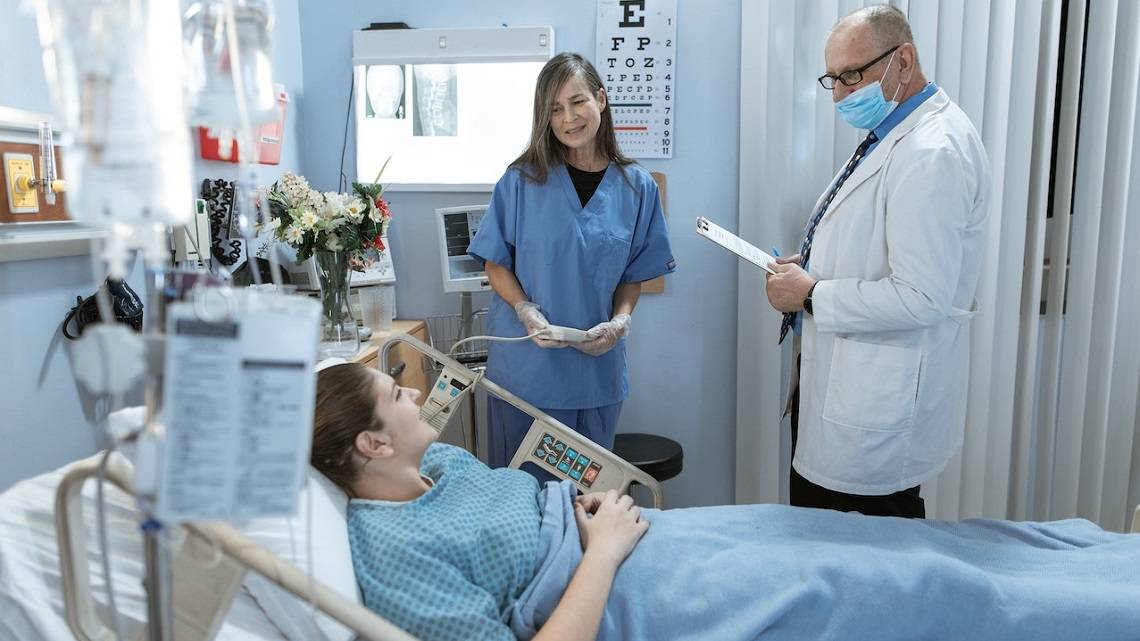What Is Breast Augmentation?
Breast augmentation, sometimes referred to as a “breast aug” or “boob job” by patients, involves using breast implants or fat transfer to increase the size of your breasts. This procedure can also restore breast volume lost after weight reduction or pregnancy, achieve a more rounded breast shape or improve natural breast size asymmetry.
Breast augmentation is done to:
Enlarge breasts that are naturally small.
Restore breast size and shape after pregnancy, weight loss or breastfeeding.
Restore symmetry when the breasts are asymmetrical
Restore the breast(s) after surgery as a treatment for breast cancer (following a mastectomy) or some other condition or event that affected the size and shape of the breast.
Correct congenital defects and deformities of the chest wall
The Different Types of Breast Augmentation
Medi Makeovers only offers Breast Augmentation surgery at a hospital under a general anesthetic by a highly trained surgeon specializing in Plastic + Reconstructive Surgeon. The most common Breast Augmentation surgeries are:
SUB-GLANDULAR BREAST IMPLANT PLACEMENT (OVER THE MUSCLE)
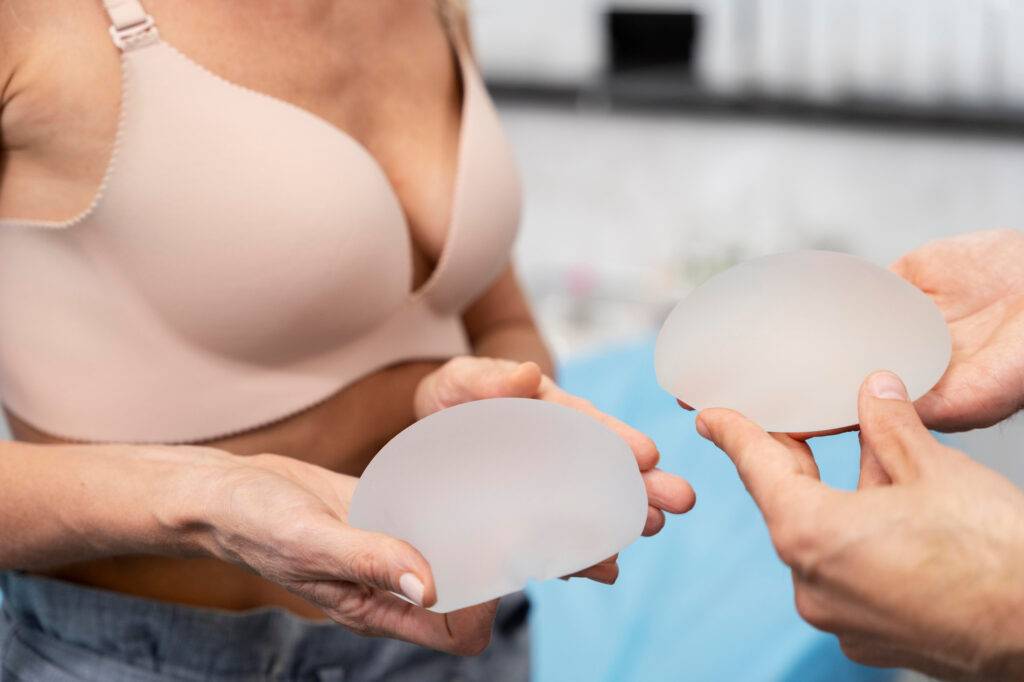
Advantages:
It can achieve a more rounded, augmented look, which some women prefer.
Implants can be placed slightly closer together to achieve more cleavage.
The breast implants do not become distorted when the pectoral muscles are flexed, which makes a good choice for women who lift weights regularly.
The surgical procedure is slightly easier and perceived as less invasive. This also means that there is less postoperative pain as compared to under the muscle placement.
Disadvantages:
Only advisable for women who have a good amount of their own breast tissue (B-cup or larger). This is so that there will be adequate soft tissue covering the breast implants to reduce the risk of breast implant visibility (palpability) and rippling, especially over time.
For patients with smaller amounts of breast tissue, bigger implants result in a less natural outcome. (However, different degrees of projections can be chosen to suit the width of the chest to get a more natural outcome.)
With less tissue covering the breast implant (only skin as compared to under the muscle technique), the breast might be more susceptible to visible rippling in the future.
Although technology allows for better breast imaging, with or without implants, the muscle technique is generally thought to require more mammogram views due to the shadow present.
Based on clinical studies, the sub-glandular technique has a higher rate of capsular contracture formation due to constant muscle movement. Patients are advised to massage the implant to reduce the risk of capsular contracture formation.
SUB-FASCIAL BREAST IMPLANT PLACEMENT
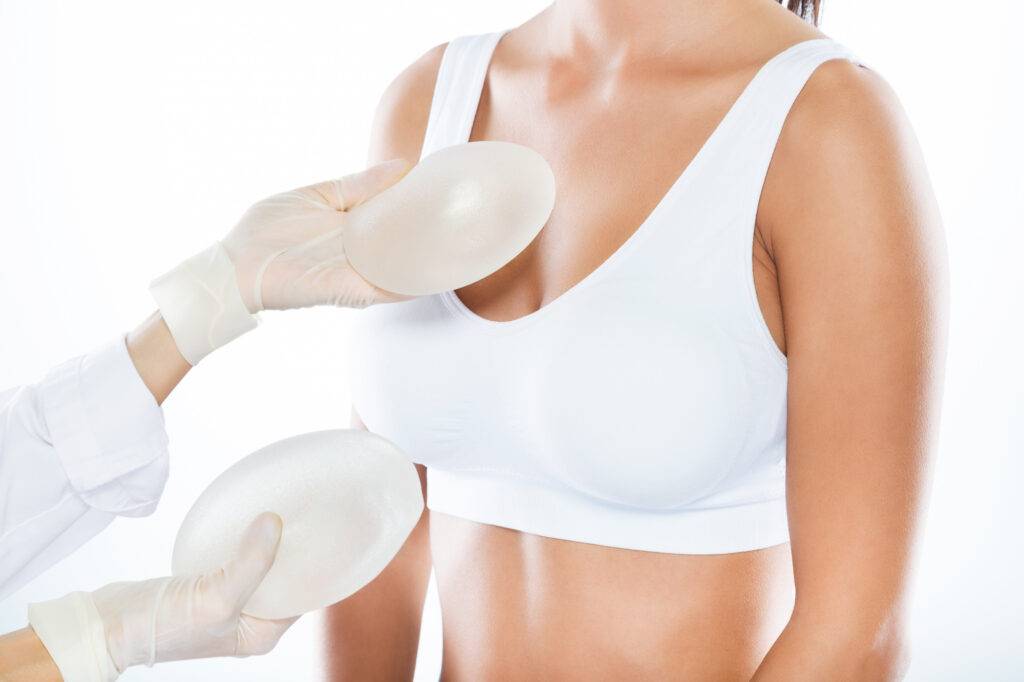
Advantages – The advantages of the sub-fascial technique are similar to the sub-glandular technique but with the additional features:
The implant is supported by a strong fibrous sheath in addition to the breast tissue.
Disadvantages – The disadvantages of the sub-fascial technique are similar to the sub-glandular technique.
SUB-MUSCULAR BREAST IMPLANT PLACEMENT (UNDER THE MUSCLE)

This procedure is Suitable for women with any amount of breast tissue.
Advantages:
It can achieve a more natural look with natural sloping upper poles.
With more soft tissue padding the breast implants, there is a reduced risk of breast implant visibility and rippling in the long run.
Less chance of sagging as the weight of the breast implant is supported by both breast tissue and chest muscle.
Less likely to interfere with mammography.
Reduced risk of capsular contracture formation.
A few disadvantages can be found on our post regarding Breast Augmentation
Disadvantages:
The breast might appear to sit in a higher position until the muscle fully relaxes in about 4-6 weeks after surgery.
This technique might not be advisable for women who regularly lift weights as it might cause implant distortion when the chest muscle is flexed.
The surgical procedure is perceived as more invasive. This also means that there is slightly more post-operative pain and longer recovery time as compared to over the muscle placement.
Not advisable for patients with too much flabby/hanging breast skin as there is a chance of the skin hanging over the implant in the long run.
DUAL-PLANE BREAST IMPLANT PLACEMENT
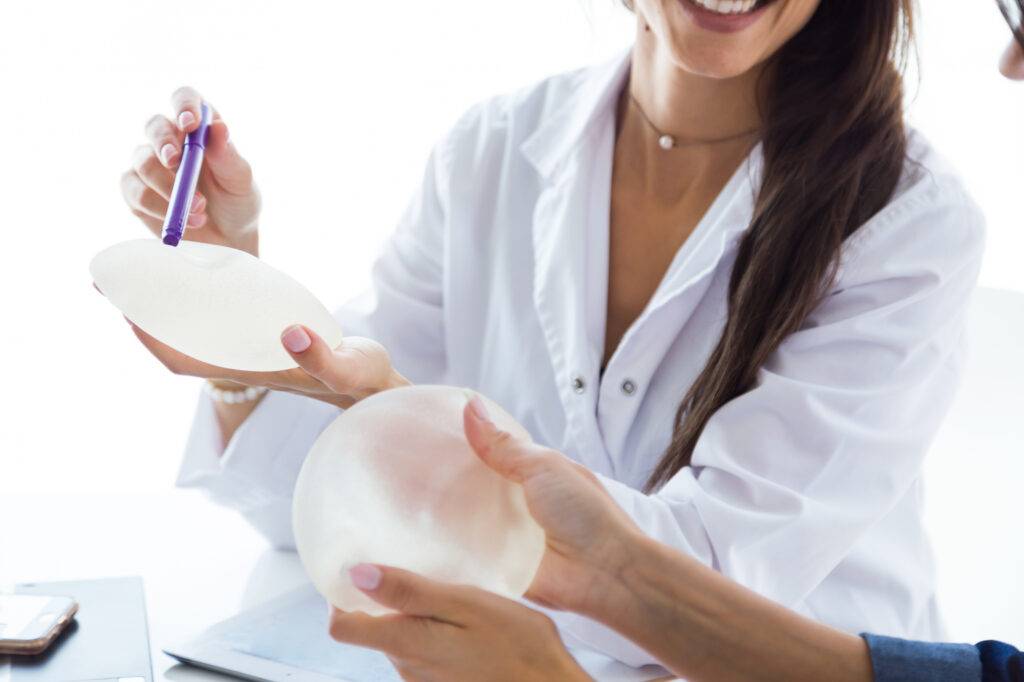
Advantages:
Combines both advantages of subglandular and submuscular techniques.
By releasing the attachments of the overlaying breast tissue to the pectoralis major muscle to varying degrees based on individual anatomy, the best-looking breast can be customized to suit each patient.
Natural results particularly for patients with very small breasts as the upper pole of the implant is covered by both the breast muscle and tissue.
Lower risk of the formation of capsular contracture.
The possibility of implant dropping is reduced as the muscle and fascia secure the implant and keep it in the right position.
The possibility of palpating the implant borders is reduced.
Lower risk of wrinkles forming on the upper part of the body.
Disadvantages – The disadvantages of the dual-plane technique are similar to the sub-muscular technique.
Most Common Types Of Implants (We Use)
Our surgeons only use FDA-approved implants, preferring cohesive gel silicone implants. The brands that are available are:
 |
 |
What To Expect During Recovery and After-Care
For a standard Breast Augmentation case, you are required to spend a minimum of 7 nights in Thailand. You will spend one night in the hospital.
Tips from our surgeons:
Sleep in an upright position and try not to sleep on your side for at least a month post-surgery. You can request more pillows at your hotel to prop you up.
To avoid unnecessary swelling or bleeding, do not bend over, strain, exercise, or do any other activities that could increase pressure in your chest during the first few weeks.
You must wear your compression bra day and night for 8-12 weeks post surgery, and you can switch to a good quality supportive sports bra during this time. Do not go braless for the first 12 months, as you are actually still in the healing stage
Once your stitches are removed (usually 7 days post-op), massage your breasts to keep them softer, avoid capsular contracture and keep them in the proper position. Your surgeon will advise you on the correct way to massage on your final follow-up appointment. Individual results may apply so, please follow your surgeon’s advice also for post-op care.
Pain Level
Above the muscle: Mild to moderate discomfort.
Below the muscle: Moderate to severe discomfort following placement under the muscle.
1 – 2 weeks of pain medication are included.
Swelling
- Above the muscle: 2 weeks.
- Below the muscle: 4 – 12 weeks.
- Your body will swell directly after surgery, so do not be alarmed if your breasts look ‘wonky’ or ‘misshaped’ – this is very normal.
- Your implants can also appear to sit quite high on your chest as your body has swelled around them (e.g., cone-like or torpedo-shaped), do not worry – they will ‘drop’ and go back to the placement that the surgeon has created for you. This is sometimes referred to as ‘fluffing,’, and the time it takes for your breasts to look ‘normal’ will depend on several factors. These factors include implant size, what size you were pre-operatively, implant surface type, whether you have massaged your breasts, skin elasticity, muscle tone, and, of course, your normal body healing – which is different for everyone.
- Your skin may also be red and feel sunburnt – though this is normal as the skin is being stretched.
- Feeling itchy is also very common as the body heals. Follow your surgeon’s instructions, and do not put anything on or near your incisions unless they have told you it is okay to do so.
Bruising
- Most of our surgeons’ patients experience no bruising at all – but if there is, it is very minimal.
Numbness
- 2-4 weeks.
Going back to Work
- Above the muscle: 1 week from your fly home date.
- Below the muscle: 1-2 weeks from your fly-home date.
- *If your job is strenuous or requires lifting, wait a month.
Exercise
- This must be confirmed by your surgeon, though typically, you must wait 12 weeks for the upper body.
- No chest wall exercises during this time. You may be able to do lower body exercises earlier than this time. No jogging or running during this time.
General risks to consider with Breast Augmentation surgery
Some of the potential complications from breast implant surgery that may be discussed with you include reactions to anesthesia, blood accumulation that may need to be drained surgically, and infection. Although rare, an infection that does not subside with appropriate treatment may require temporary removal of the implant.
Capsular contracture
When a breast implant is inserted, a scar capsule forms around it as part of the natural healing process. The capsule may sometimes tighten and compress the implant, causing the breast to feel firmer than normal. Capsular contracture can occur to varying degrees. If it is severe, it can cause discomfort or changes in the breast’s appearance. In such cases, more surgery may be needed to modify or remove the scar tissue, or perhaps remove or replace the implant.
Implant rupture
Breast implants are not lifetime devices and cannot be expected to last forever. If you decide to have a lift later in life, then it is advisable to change the implant. The new implants available now are of very high quality, but they are still not expected to last a lifetime.
Breast cancer screening
If you are at an age when mammographic examinations should be conducted on a periodic basis, it will be important for you to select a radiology technician who is experienced in taking x-rays of augmented breasts. Additional views of your breasts will be required. Your plastic surgeon, in some instances, may recommend other types of examinations such as ultrasound or magnetic resonance imaging. An implant may obscure some of the mammograms.
Other risks of breast implants
Other risks include changes in the sensation of the nipple or breast and changes in the ability to breastfeed. Changes in sensation may either be increased or decreased or altered sensation. These changes may be temporary or permanent. Also, implant visibility, rippling, and asymmetry may also occur.
Other considerations of breast implants
Some women with breast implants have reported problems including certain connective tissue and immune-related diseases. Women without implants also have these disorders, so the key question is whether breast implants increase the risk of developing the conditions. Several large studies have been completed that provide reassurance that women with breast implants do not have a significantly increased risk for these diseases.

